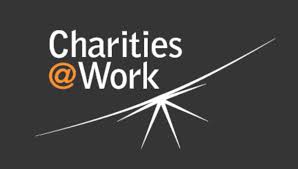Measuring Employee Community Involvement
By Peter Dudley

Measuring Employee Community Involvement
How do you measure success of employee community involvement? Are the metrics changing?
I bet you’d be surprised to find out that your matching gifts program doesn't affect how happy your employees are with your company. I know it surprised me, when the analysis of our data came back not too long ago.
I’ve run the matching program at Wells Fargo for a number of years; in 2013, we matched over $21 million in employee donations to schools. This program was designed long before I joined the company and has been unchanged since, but we’re looking at it much more closely now that we have new ways to measure its effectiveness.
In fact, we’re taking a closer look at all my programs. My peers who run workplace giving and volunteerism programs at other companies say they’re doing the same, and it’s echoed in research papers and blogs: There are better, more valuable ways to measure our effectiveness.
It wasn’t so long ago that we were only asked how many employees gave, how much they gave, how many hours they volunteered, and how many nonprofits benefited. Those are still the numbers that show up in most press releases because they’re easy to understand. They’re also, for the most part, meaningless.
Saying our employees gave $97 million and recorded 1.72 million volunteer hours benefiting over 20,000 nonprofits in 2014 is nice. And that was enough in the old days, until about a decade ago when CSR practitioners were introduced to the term “business case.”
On the surface, the business case for a matching gifts program like Wells Fargo’s seems pretty straightforward: by matching donations to schools up to $5,000 per employee per year, we encourage giving and engage employees. If we're matching $21 million in donations from thousands of employees every year, it must be working. Right?
Not so fast. One of our key goals with all my programs is to enhance employee engagement—that is, to help our employees feel that Wells Fargo is the best company to work for. (I’ll save other program goals--such as valuable impact in the community, and enhancing the company's reputation--for other posts.) Our HR team measures engagement, and over the past few years we've been correlating those findings with how our employees use my programs.
What we've discovered is that employees who have a donation matched don’t feel any better or worse about working for Wells Fargo than employees who never request a match at all. That is, whether your donation is matched has no correlation with how happy you feel working at Wells Fargo.
Suddenly, that business case for our matching program as it exists today isn't so cut and dried.
But we can't draw any certain conclusions yet; the questions we've asked of the data so far aren't sophisticated enough for that, and we have to dig deeper to understand more before we go making any changes. At least now, however, we have a sense of whether we're having the kind of effect we want.
You don't have to search the internet too hard to find studies that are exploring these kinds of questions at other companies, and across entire industry segments. In workplace giving, volunteerism, and elsewhere, research is uncovering the ways that community involvement affects engagement, productivity, and other critical business indicators. It's not enough any more to throw big numbers around like $97 million raised or 1.72 million volunteer hours recorded. Employees want more. Executives want more.
We as program managers should want more. Knowledge is, of course, power. I'm not afraid of data that shows my matching program isn't having the effect we always thought it was. I find that kind of knowledge an opportunity to learn how to improve, how to adapt to the changing demands and preferences of our evolving workforce.
This March, join me and some of the people foremost involved in this research at the Charities@Work conference in New York City. I would love to hear what kind of new ways you are using to measure and learn about the effectiveness of your own programs, and how you see the evolving workforce changing our roles in the future.
>> Read more from the Charities@Work blog series
_________________________________________________________________________________________
Peter Dudley
SVP, Community Support Programs at Wells Fargo
Peter joined Wells Fargo in 2001 after 10 years in software startups. As manager of Team Member Philanthropy, he runs the nation’s largest workplace giving campaign (ranked #1 five years in a row by United Way Worldwide), multiple volunteer programs under the Wells Fargo Volunteers brand, and employee hardship and scholarship funds. He is a member of United Way Worldwide’s Global Corporate Leadership Council. A native of Connecticut, he has a degree in Electrical Engineering from UC Berkeley. In his career, he’s worked on the B-2 stealth bomber, the first-ever smart phones, and the first PDAs.

